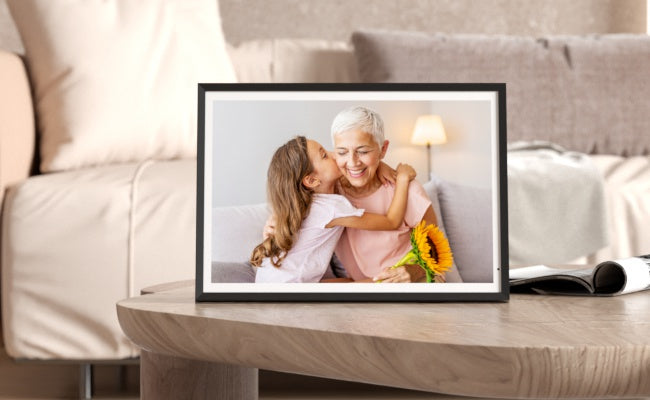Transform Your Walls: The Art of Framing Wallpaper for Stunning Decor
Imagine walking into a room where the walls tell a story not through a single pattern, but through curated, artistic panels that draw the eye and spark conversation. This is the magic of framing wallpaper, a design technique that elevates ordinary rolls into extraordinary wall art. Instead of covering an entire wall, you select the most captivating sections of wallpaper and present them in frames, creating a gallery-like effect that adds depth, texture, and personality to any space.
The concept is beautifully simple: treat wallpaper not as a background, but as the main event. Whether you have a leftover roll from a previous project, discovered a stunning but overwhelming pattern, or simply want to add a touch of luxury without the commitment of a full wall, framing wallpaper panels offers a versatile and sophisticated solution. It bridges the gap between traditional wall art and interior design, allowing you to showcase bold prints and textures in a controlled, intentional way.
Why Frame Wallpaper? The Unbeatable Advantages
Framing wallpaper unlocks a world of decorative possibilities that traditional application does not. For renters, it's a game-changer. You can enjoy the look of an expensive, textured wall without worrying about damage or demanding security deposits. When it's time to move, your artwork simply comes with you. It also provides a brilliant way to sample a daring pattern. A large-scale, vibrant print might feel intimidating across an entire room, but contained within a elegant frame, it becomes a powerful and manageable focal point.
From a design perspective, this approach offers unparalleled flexibility. You can create a symmetrical arrangement of framed wallpaper panels above a sofa, a vertical stack in a narrow hallway, or a single, oversized piece that serves as a headboard alternative in a bedroom. It allows you to mix and match patterns, or use the same pattern in different frames to create a cohesive yet dynamic gallery wall. Furthermore, it's an economical way to use leftover rolls or even order small samples with the specific intention of turning them into art.
My Personal Foray into Framed Wallpaper Art
I first experimented with this idea in my own home office. I had fallen in love with a botanical wallpaper featuring large, illustrated monstera leaves, but my office is small and has several built-in shelves. A full wall would have felt far too busy. Instead, I purchased a single roll. I carefully measured and cut three perfect squares, each highlighting a different part of the leaf pattern. I then mounted them in simple, black wooden box frames I found at a local craft store.
The result was transformative. The three framed wallpaper panels created a stunning triptych on my largest blank wall. The black frames gave the vibrant green pattern a polished, museum-quality feel, and the textural depth from the frame's rabbet made the art pop from the wall. Guests consistently compliment the 'artwork,' and I love revealing that it's actually framed wallpaper. This project cost a fraction of what three large original paintings would have, and it infused the room with exactly the character I was seeking. It was a rewarding do-it-yourself wallpaper panel project that proved how accessible and effective this technique can be.
A Step-by-Step Guide: How to Frame Wallpaper for Art
Creating your own diy framed wallpaper panels is a straightforward process that yields professional-looking results.
- Select Your Wallpaper: Choose a pattern with a high-resolution, compelling motif. Large-scale florals, intricate geometries, or textured grasscloths work exceptionally well. You can use leftovers or order a sample swatch large enough for your intended frame size.
- Choose Your Frames: The frame is as important as the art itself. For a modern framed wallpaper look, consider slim, metallic frames. For a more traditional feel, ornate wooden frames add grandeur. 'Float' frames, which create a small gap between the glass and the wall, are perfect for showcasing the edges of the paper and adding a three-dimensional effect.
- Gather Your Materials: You will need your chosen frames (with mounting hardware), the wallpaper, a sharp utility knife, a metal straightedge or ruler, a cutting mat (or a safe cutting surface), and double-sided tape or spray adhesive.
- Measure and Cut: Lay your wallpaper face-down on the cutting mat. Remove the backing from your frame and use the included cardboard mat or the glass itself as a template. Trace the shape onto the back of the wallpaper, then use your straightedge and utility knife to make a clean, precise cut. Always cut slightly inside your lines to ensure the paper fits comfortably within the frame.
- Mount the Wallpaper: If your frame includes a mat, you can secure the wallpaper to the back of the mat using double-sided tape. If not, you can carefully mount it directly onto the frame's backing board using a light spray adhesive or tape. Ensure the paper is perfectly smooth and centered.
- Assemble and Hang: Carefully place the glass over the mounted wallpaper, assemble the frame, and secure the backing. Then, hang your new piece of custom art using the frame's hardware, ensuring it is level and securely attached to the wall.
Inspiring Framed Wallpaper Ideas for Every Room
The applications for this technique are nearly endless. Here are some concepts to spark your creativity:
- Framed Wallpaper Panels Bedroom: Create a luxurious headboard effect by hanging a single, oversized framed panel behind your bed. Alternatively, hang two or three vertical panels on an adjacent wall for a balanced, serene look.
- Living Room Framed Wallpaper Panels: Design a striking focal point by grouping an odd number of panels above your sofa or fireplace. Mix and match frame styles for an eclectic gallery wall, or keep frames identical for a more formal, structured appearance.
- Framed Wallpaper Accent Wall: Instead of a traditional accent wall, create one using a grid of identically sized framed panels. This adds incredible texture and pattern while remaining easier to change than a pasted wall.
- Hallway Gallery: Turn a boring hallway into an art gallery by lining the walls with a series of framed wallpaper panels. This guides the eye and makes the space feel intentional and curated.
- Unexpected Spaces: Don't forget about small nooks, bathrooms, or the space above kitchen cabinets. A small, beautifully framed wallpaper sample can add a delightful surprise in an unexpected place.
Selecting the Perfect Wallpaper for Framing
Not all wallpapers are created equal when it comes to framing. Look for patterns with a clear focal point or a repeating motif that can be beautifully isolated. High-quality, thick papers are easier to handle and less likely to wrinkle. Textured wallpapers, like grasscloth, linen, or embossed vinyl, create incredible depth and shadow play when placed behind glass, making them exceptional choices for this project. When in doubt, lean towards bold, graphic patterns or serene, natural textures that can stand on their own as a piece of art.
Framing wallpaper is more than just a craft project; it's a design philosophy. It's about seeing the potential for art in everyday materials and having the confidence to display it. It empowers you to personalize your space with a level of creativity and flexibility that is both affordable and profoundly stylish. So, the next time you see a roll of wallpaper, don't just think of it as a wall covering. See it as a potential gallery, waiting to be framed.






